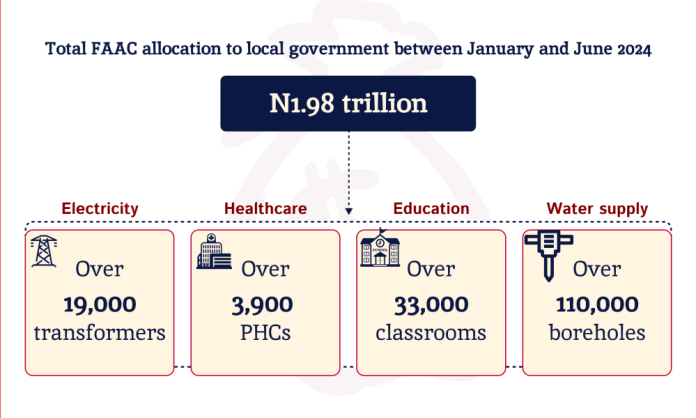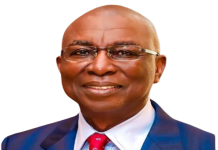For more than a year, especially since the assumption of new administrations by both the federal and state governments in May 2023, there have been questions as to how each tier of the government spends the allocations disbursed to them monthly.
The Federal Account Allocation Committee (FAAC) is responsible for reviewing and adopting the allocation of funds to states of the Federation.
The revenue obtained from crude oil, taxes and other statutory revenues are disturbed with a sharing formula that allocates 52.68 per cent to the federal government, 26.72 per cent to states, and 20.60 per cent to local governments.
Since the removal of the fuel subsidy, the allocations to these three tiers of the government have increased by a substantial percentage. For instance, Ripple Metrics reported that in 2023 a total of N3.53 trillion was disbursed to the 36 states and the Federal Capital Territory in 2023.
But a closer look at the data showed the allocation which was around N785 billion in the first quarter of 2023 increased in the subsequent quarter after the removal of the fuel subsidy. For the second and third quarters, N882.76 billions and N996.66 billion was shared. While, N946.49 billion was allocated in the last quarter of 2023.
This allocation has equally increased in 2024 with a total of N12.45 trillion distributed to the federal, state and local government between January and June 2024.
Very recently, a ruling by the Supreme Court granted financial autonomy to the 774 local government councils in the country, as it decreed that it is unconstitutional for state governors to withhold funds allocated to local governments, paving the way for the councils to manage their finances and make independent decisions about their expenditures.
Ripples Metric reported that between June 2023 and May 2024, a total of N3.05 trillion was disbursed to the 774 local governments as FAAC allocation. This means that the average allocation the local governments got for every month was N254.51 billion for the period under review.
READ ALSO:RipplesMetrics: Can Tinubu achieve annual GDP target. What does data says?
However, in this report, RippleMetrics takes a closer look at Nigeria’s pressing challenges and conducts a thought experiment: what if the funds allocated to one level of government were redirected towards addressing these key issues? By comparing the two, we explore the potential impact of reallocating resources to tackle Nigeria’s most pressing problems.
Some of these challenges include accessibility to electricity, healthcare, education and good water supply.
An Energy Progress Report released in 2022 said that Nigeria has the lowest access to electricity globally, with about 92 million persons out of the country’s 200 million population lacking access to power. On healthcare, a report released by The ONE Campaign, reveals that health systems in 18 Nigerian states are weak, resulting in poor healthcare service delivery, especially in public facilities.
On education, UNICEF data says that one in every five of the world’s out-of-school children is in Nigeria, while about 67 per cent of Nigerians have access to basic drinking water supply services.
What can the allocation do?
For instance, the total allocation disbursed to only the local government between January and June 2024 was N1.98 trillion, according to the Nigerian Bureau of Statistics report. Using allocation from Nigeria’s budget as a benchmark, Ripple Metrics created a hypothesis, assuming this allocation for the local government is redirected to solving challenging issues in the country.
With a cost rate of N10 million for 21 500kva/11/0.400kv with 11km line, the allocation to the LGAs can provide over 19,000 transformers around various communities in Nigeria increasing their chance of electricity supply.
For healthcare, with the standard of N500 million as outlined by the World Health Organisation (WHO) for the establishment of an averagely equipped primary healthcare centre facility, the allocation can provide over 3900 PHCs in Nigeria to improve healthcare.
Similarly, with a cost rate of N60 million for the construction of school classrooms, the allocation can provide over 33,000 classrooms for students across Nigeria. While with a unit cost of N18 million for motorised boreholes, the allocation can provide more than 110,000 boreholes in various communities that have poor access to water supply.
By: James Odunayo
The post RipplesMetrics: FAAC allocation to LGAs can solve four major problems in Nigeria appeared first on Latest Nigeria News | Top Stories from Naomisophyblog.








